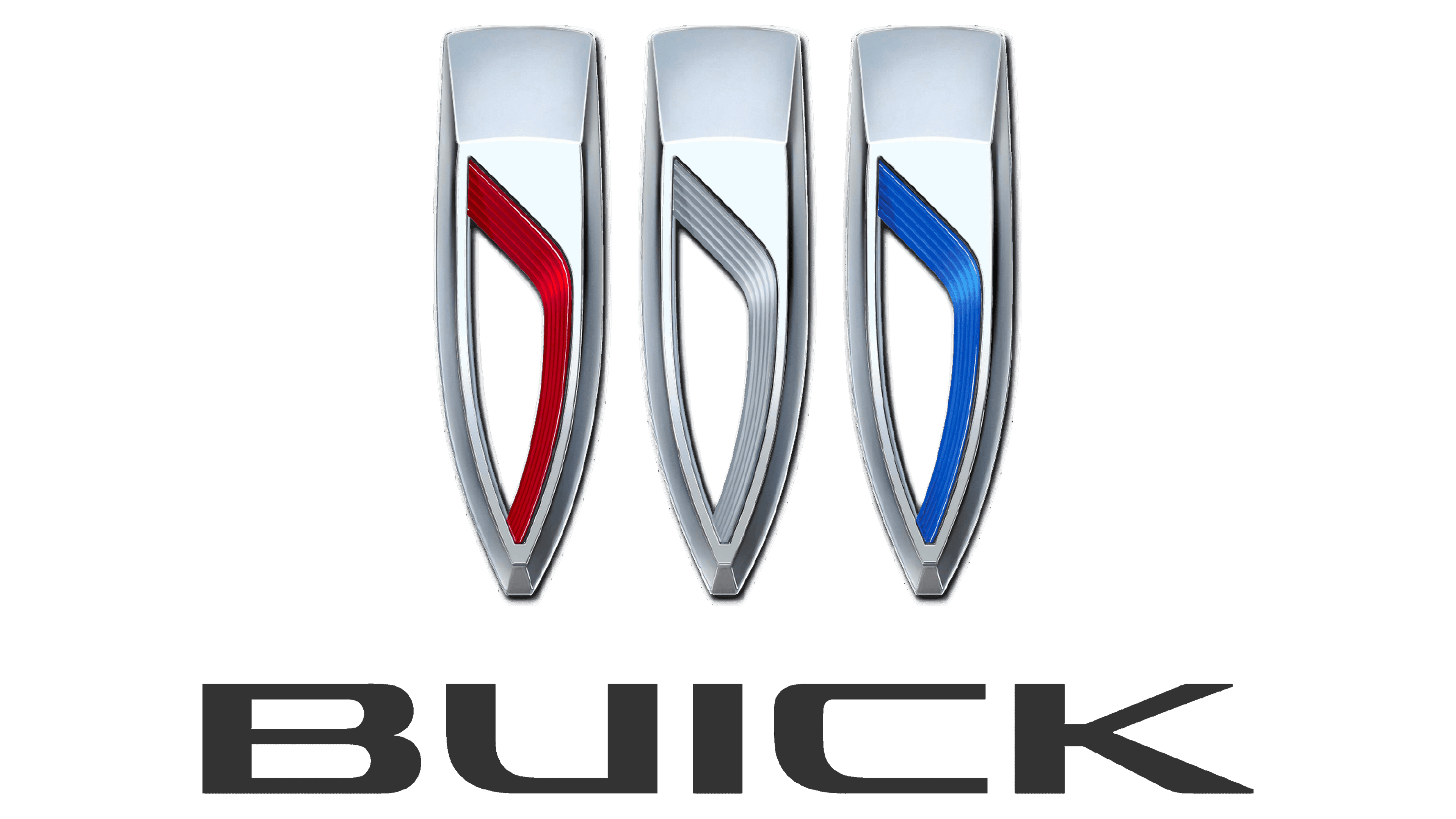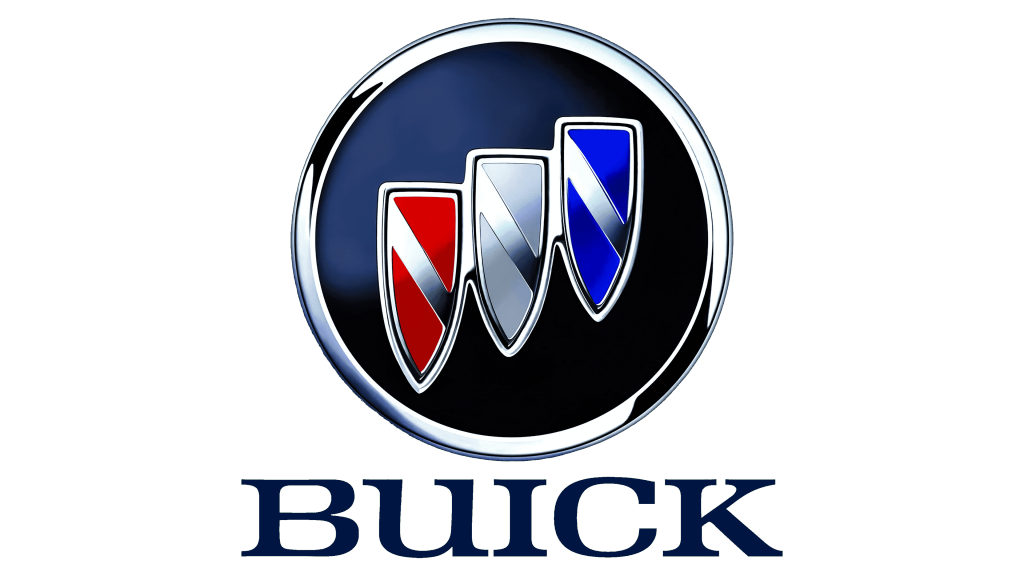Buick Logo
Tags: cars that start with b | Silver Car Brands | USA cars
The history of the Buick brand dates back to 1903, when the first production cars were launched. Buick is an iconic US auto brand founded by David Buick, a talented inventor from in Michigan. The brand has been the embodiment of American style in the States, but over time, the manufacturer’s focus shifted to the PRC market.
Meaning and history
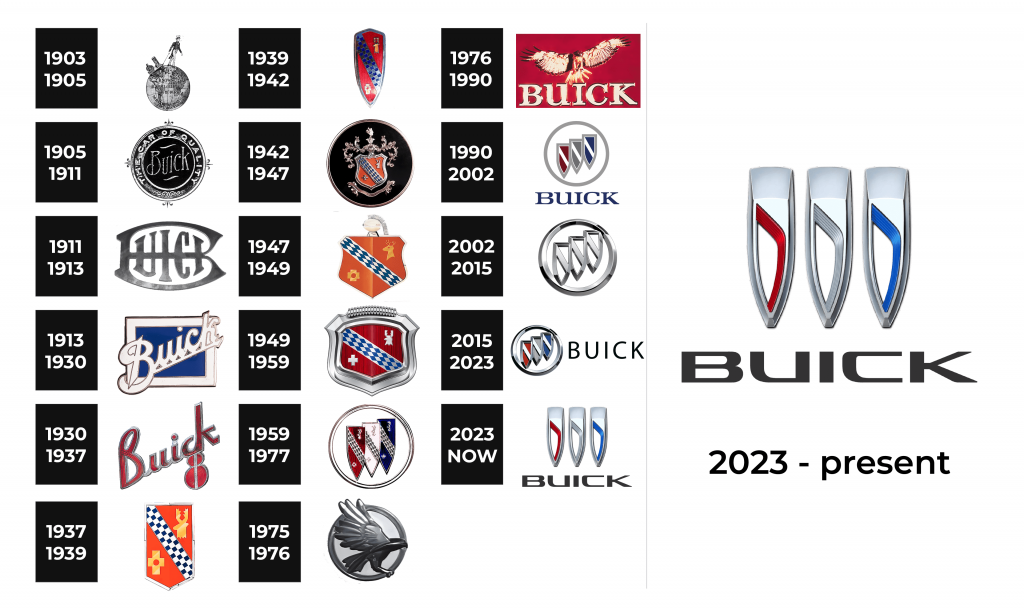
Buick Motor Car Division has changed the logo several times. Since 1905, each version has included the name of the company’s founder. The success story of David Buick in the automotive industry began in 1901 when an experimental version of the car was sold. Prior to that, the industrialist made money selling airships.
1903 – 1905
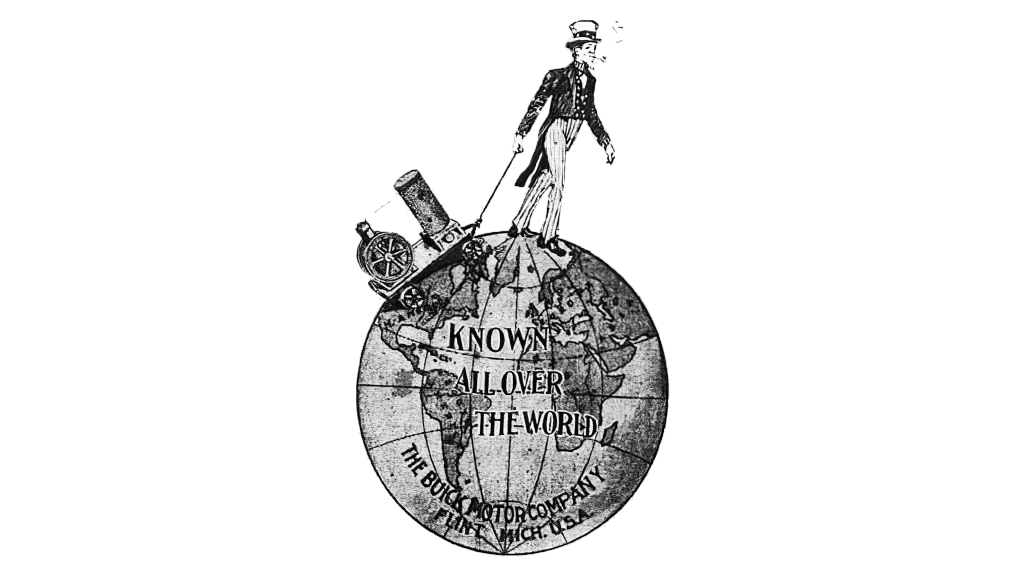
The first known Buick logo was designed, depicting a man walking across the globe. It existed with the brand for only a year, but it is one of the most emblematic car logos in history.
1905 – 1911

In 1905, the brand made a new design in the form of a circle with a thick frame, on which the inscription “Quality Car” is located with the brand name in the center. The word “Buick” itself is in hand-drawn typeface.
1911 – 1913

In 1911, the designers played with the lettering, making a large capital letter “B”, inside which all the other letters were inscribed. But the logo was so clumsy and incomprehensible that it lasted only 2 years. In 1913, they returned to the legible inscription in italics on a blue rectangular background.
1913 – 1930

In 1913, Buick created a new logo based on the word mark. It is an inscription located diagonally on a two-color square. The white Buick italics are balanced by the sharp corners of the background, which is blue. This is a striking logo that perfectly reflects its time.
1930 – 1937

A new word mark was developed in 1930. It was painted in red and became more modern in appearance. The letter “B” has become larger, and now there is more free space between the other letters. The outline of the letters is silver.
1937 – 1939
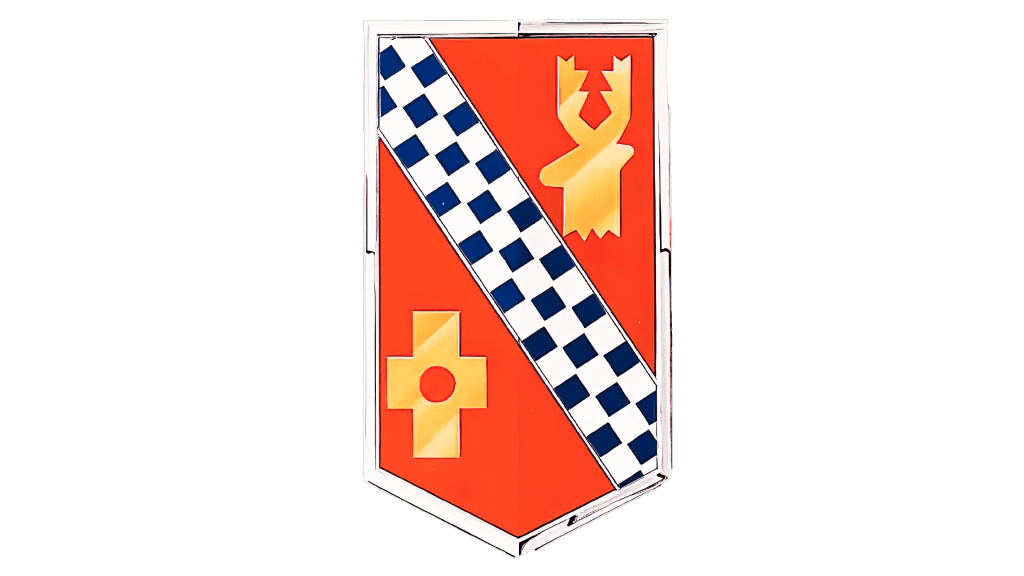
The first Buick crest was created in 1937. It was based on the old coat of arms of the family of the founders of the company. The coat of arms is made in orange-terracotta color with a thick diagonal line with a checkered pattern. In the upper part there is a golden image of a deer, and in the lower part there is a golden cross.
1939 – 1942

In 1939 the coat of arms was changed. Now its upper part is curved. The orange background has been replaced with a red one, which makes the logo more visually powerful and vibrant.
1942 – 1947

In 1942, the brand placed its coat of arms on a black circle, adding gold ornaments. The coat of arms itself has now acquired a more complex and wider shape. And monochrome checkers are replaced by white and blue rhombuses.
1947 – 1949
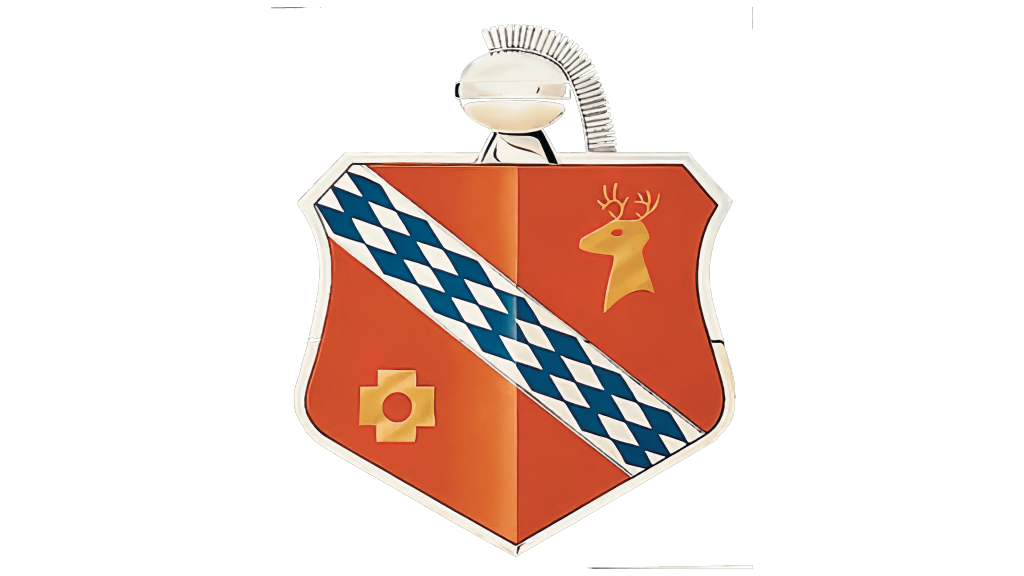
In 1947, the brand removes the round frame and ornaments. Only a stern comb remains. The colors have returned to the orange palette.
1949 – 1959

Gold tones change to silver, the shield gets a thick frame around it, and the background turns red again.
1959 – 1977

The coat of arms was replaced by three narrow shields enclosed in a circle. Each shield was painted a different shade of blue, white and red to mark the three-car models (Electra, Invicta, LeSabre respectively).
1975 – 1976

A very interesting time period for Buick began in the 70s. The brand wanted to experiment and coded the hawk with its symbol. At the same time, the eponymous Buick Skyhawk was launched.
1976 – 1990

Hawk is more detailed and an inscription appears on the logo. It is finished in white, which creates a strong contrast against the red background. Happy Hawk has been with the brand for four years.
1990 – 2002
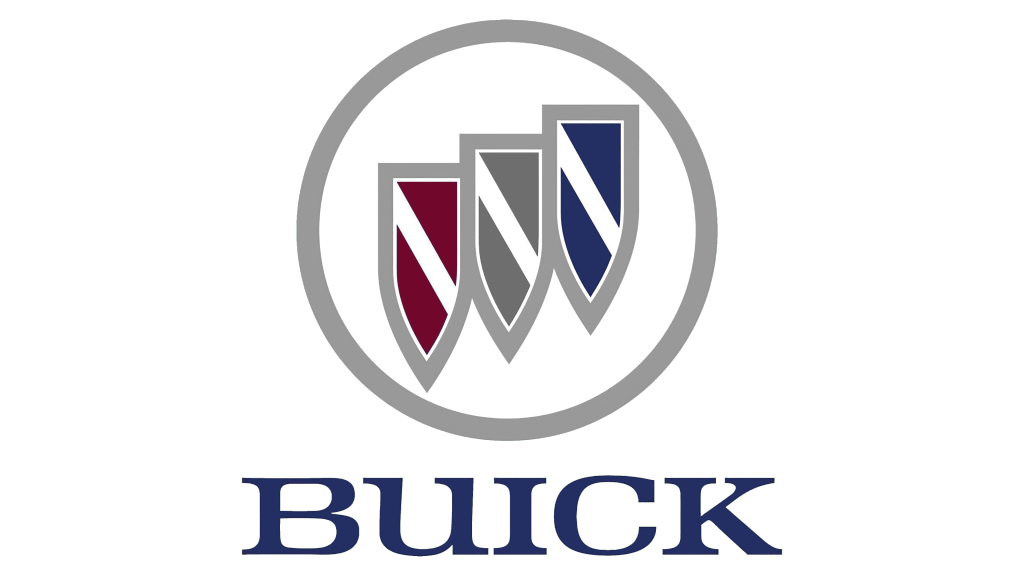
In 1980, the three-shield emblem replaced the hawk. The 1959 version was redesigned with a blue background. A text mark is placed under the emblem in black capital letters.
2002 – 2015
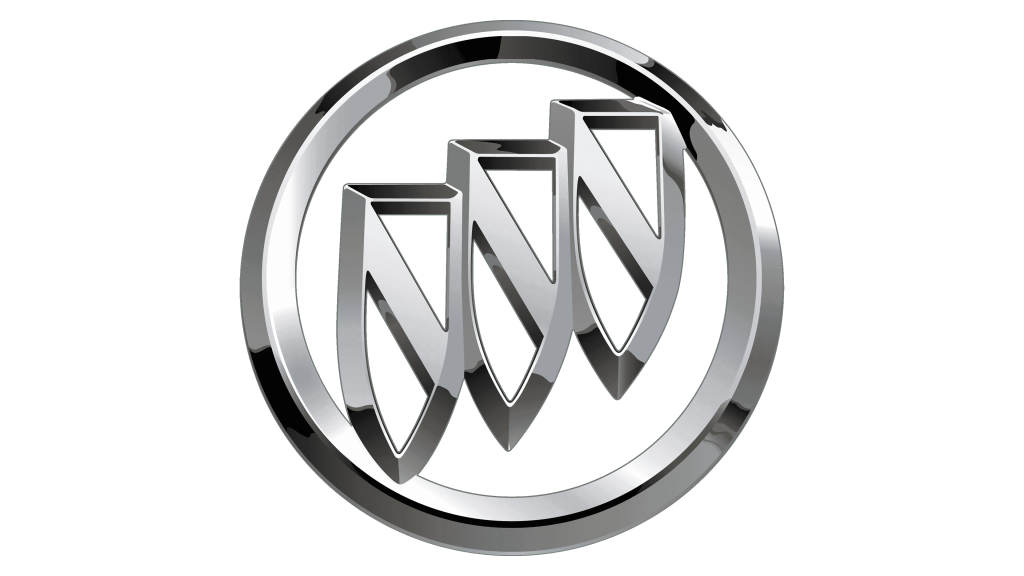
Redesigned the 2002 Buick logo simplifies the iconic emblem, keeping only the silver color. It is a modest volumetric badge with three shield silhouettes framed by a thick circle.
2015 – 2022
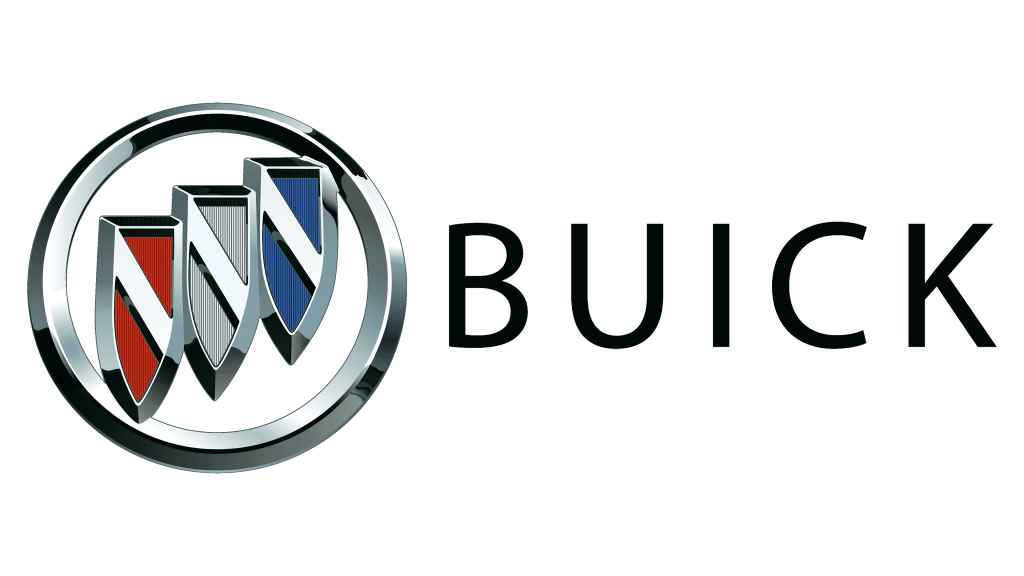
The Buick logo is timeless and elegant, preserving all the milestones of the brand and marking the progress of the company.
2023 – now

The previous logo versions evolved into a more stylish and minimalistic appearance. The three shields were now lined up straight and separately from each other. They looked three-dimensional and each had a colored line. The first one was red, the second got silver, and the third featured blue. The brand name was moved to the bottom. Although it was still done in black, the font has been changed. The letters looked significantly wider and had a futuristic, geometric feel. It had the same style as the Personalization Regular font by Jeff Levine.
Legendary cars
For more than a century, about 60 million cars have been produced under the Buick logo.
The first truly successful model was the 1910 Model 10 Touring. Thanks to it Buick Motor Division received the second place in the list of the largest US automakers.
In the 30s, eight generations of the Roadmaster series gained wide recognition. The Roadmaster used an 8-cylinder overhead valve engine, a technical innovation at the time. In 1946-1957. Roadmasters made up the premium line of the brand. The yellow Roadmaster Convertible became the basis of the plot of the Hollywood blockbuster “Rain Man” (1988) and was subsequently sold at auction for 170.5 thousand dollars.
Buick-McLaughlin is also a legendary retro car.
In honor of the brand’s 50th anniversary, the Skylark was built on the basis of the Roadmaster – a luxurious 2-door convertible designed by the genius of automotive design Harley Earl. The designer also inspired the creation of the first LeSabre in 1951, Buick’s best-selling full-size car.
In 1965, the first Gran Sport rolled off the assembly line – a sports modification of several previous Buicks, a classic muscle car with an enlarged 8-liter high-power engine (meaning “muscle car”, in translation “muscle car”, appeared only in the late 70s, when the era of these cars was already over).
Park Avenue is a full-size sedan, the first generation of which has been created in the early 90s. The six-seater version of Park Avenue Ultra is distinguished from the lineup.
Concept cars
Buick signia
And while the idea itself sounds great, especially considering that Buick equipped the concept with all-wheel drive instead of the front one, the end result was at least dubious. The rear was the most controversial part of the car with its massive, transparent, hearse-like hood and a pair of hinged doors in the rear wall. The beak-like front was no better; the wide hips of the inflated hind wings were hardly attractive.
This “high-end family sedan with crossover capabilities,” as Buick described it at the time, never made it into production.
Buick wildcat
The Wildcat is more than just a McLaren-Buick concept car. Even today, it looks spectacular and futuristic thanks to the unusual roof that opens forward and upward in an airplane manner. The bizarre body of the concept is made of composite materials and carbon fiber, therefore the car is surprisingly light. Its weight is only 1320 kg.
But the dynamics were not the same as one would expect from a car with such an appearance and a promising power plant. The prototype accelerated to 96.6 km / h in 8.4 seconds, while its top speed was limited to 113 km / h. To this day, it is not known how far the Wildcat could accelerate without limiters.
Although this concept car, unveiled at the 1985 SEMA tuning show, was not functional, Buick built a second exemplar of the same car, which was then used for a series of engineering tests. Although Wildcat still did not come close to becoming a production model.
